Designing Women
By Amna Khalique | Fashion | Life Style | Published 16 years ago
In Pakistan, buying jewellery usually equates to visiting scores of stores before finding that perfect set of earrings or necklace. When it comes to precious and semi-precious stones, Pakistani women usually want an exclusive, one-off design they can wear to social gatherings and weddings. With designer jewellery now available in the market, women need not fret — there is a wide variety to pick and choose from. Newsline interviews five women who are in the business of designing exclusive jewellery.
No Stone Unturned
“I actually started designing jewellery by accident. I am an architect by profession and was in my third year of college when I got married and decided to take a break. The break never ended. It all started when some of my husband’s international garment buyers were visiting from abroad and were looking for some jewellery for their wives. They bought a few pieces from somekarigars I knew, who basically cut in stone. They were so shocked by the low prices that they came back for more in three months. Then I met a German lady who wanted to hold an exhibition for the German community in Karachi, so I designed about 20 pieces for her. I have now been in the field for 14 years.
My inspiration comes from the stones. For instance, I usually keep the stones in their original shape and form, and work around the stone rather than breaking or cutting it to make it smoother. If I did that, I would lose the unusual colours of the stones. An advantage I have is that I have my own cutter, so I can play around with the shades and shapes of the stones. I love experimenting but at the same time, I am very particular about my stones. None of them are dyed or treated. I also have my own laboratory so I can check if something is genuine.
Generally, I work with both precious and semi-precious stones, like rubies and topaz, with 22-carat gold. I do a rhodium polish to give my work that white look. I don’t like a gold finish and at the moment, it is not in vogue either. I keep with the current trends and use a lot of art deco motifs. Fortunately, my karigars have the sensibility to understand what I want from them. There are times when I have to re-melt the pieces because they are not what I wanted and end up paying the costs that incur.
Designing is a tedious process and it takes a while to come up with something new. Once I give the design to the karigars, it can take upto a month or two to work on a piece. This is why I do not work on a quota.
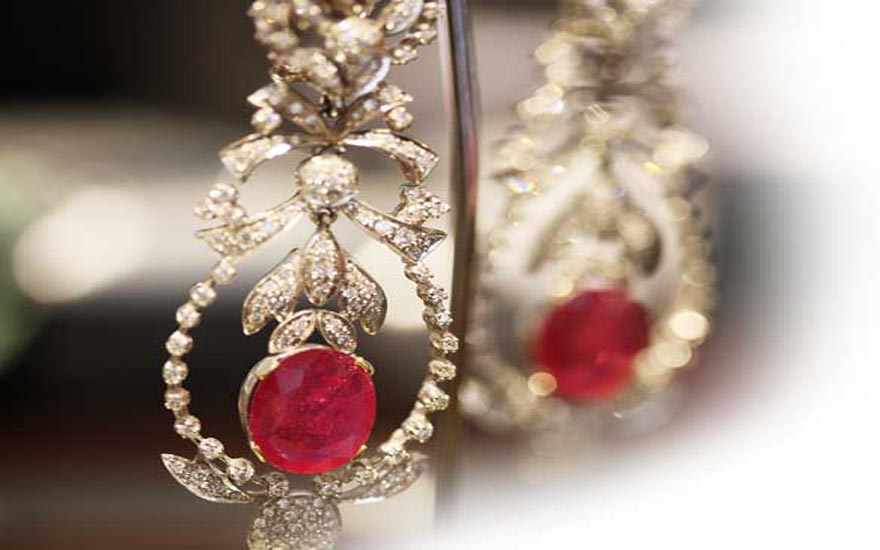
I have a lot of customers, which include regulars from Pakistan and even around the world. I once did a paraanda in 22-carat gold with meena kaari for a Chinioti family. A lot of people bring their diamonds and stones and ask me to work with them. Some customers even come to me with their ancestral jewellery and I create new designs keeping that in mind.
I try to make sure that I keep the option of changing stones in most of my jewellery. A hook at the back makes it very easy to change the stone according to your liking. You can conveniently change the look of a piece of jewellery by putting in a pearl, a turquoise or a sapphire.
Currently, clients want individual pieces rather than matching earrings to go with a necklace. We have wedding sets too, but people prefer casual pieces. Girls want accessories for dinners and parties, so earrings work best for them. Making individual pieces is the thing for me because in the case of a set, you need all the stones to be identical. As I only use real, untreated stones, even in a pair two stones would never be exactly the same.
Ultimately, I go for quality not quantity. I don’t produce in bulk and I don’t repeat my designs. I know there is more profitability if you create more pieces but I prefer giving my client that exclusive touch.”
Sherezad Rahimtoola
Romancing the Stone
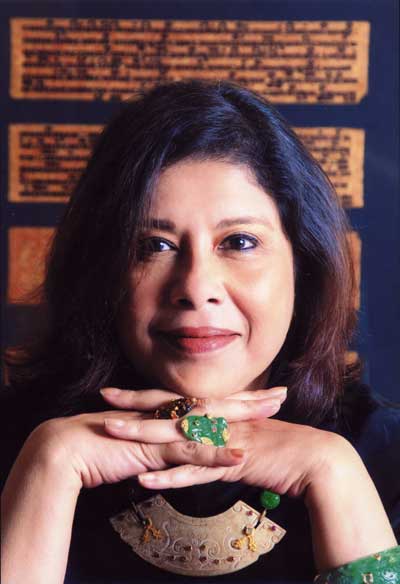
Samina Ibrahim
“I have been designing jewellery for 20 years — but only for myself! I think I have always liked jewellery that’s been a little different; something unusual, something with an edge, and the bigger the better! I remember I was walking down Beauchamp Place in London about 10 years ago when I saw a necklace that was so stunning and so different. It was the necklace of my dreams. Sadly, it was also wildly expensive. That was when I decided that I was going to make my own jewellery. My first piece was put together from an antique Nepalese pendant of my mother’s and some semi-precious stones she had. It was unique, high-impact and didn’t break the bank. This combination became my design ethos.
And then began my quest for unusual raw materials. It was on a holiday in Hong Kong that I discovered the beauty of jade, and carved jade pieces became the focal point of my jewellery, along with unusual semi-precious stones, including some I had never even heard of. It was fascinating to handle and work with stones that I had seldom seen in Pakistan and combine that exotic eastern flavour with our traditional gold craftsmanship. Each piece of mine tells its own story and is a totally original creation, where the inspiration comes from the stones themselves. So every necklace, earring or ring is an individual piece.
It has been quite challenging to change the mindset of the karigar to think out of the box. Very often I have come up with technical solutions while crafting a design, even though I have no formal training. I work with only one jeweller and we have both learnt along the way. Fortunately, he was ready to break the mould and explore a whole new concept in jewellery design. But, even now, we have our moments of extreme mutual frustration!
Since each piece is unique in its own way, my production is fairly limited and I normally show through exhibitions. My customers range from young girls to older women with a taste and sensibility for dramatic, statement jewellery.
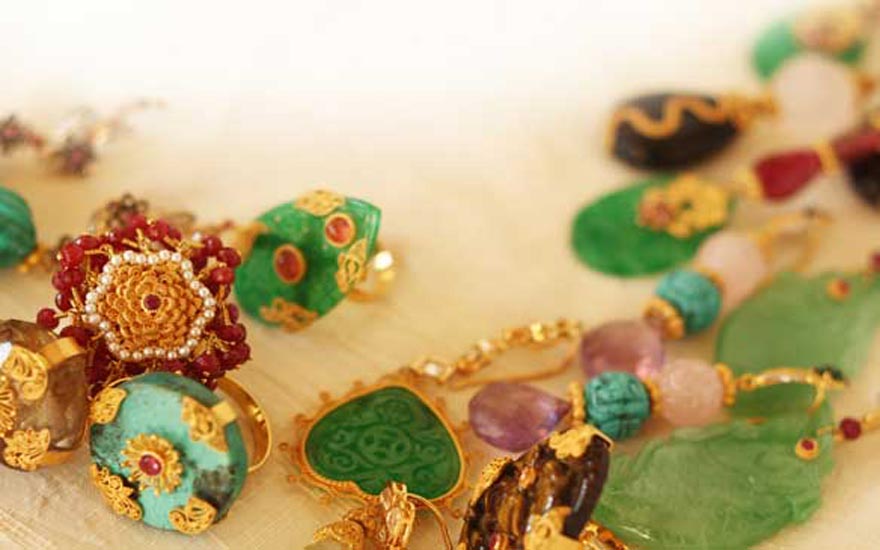
Although I occupy a very small niche in the jewellery market, my creations are now immediately recognised and that provides a wonderful feeling of creative satisfaction. I feel proud that I was able to open new horizons in jewellery and show that it’s not just diamonds, rubies and emeralds that can make you catch your breath. There’s an amazing world of semi-precious stones that are visually far more stunning. Imagine a large jade pendant carved into the Chinese imperial dragon or a legendary phoenix. Or delicate coral fashioned into a Chinese chrysanthemum, or earrings made of finely carved jade carps, or rings made out of sculpted rose quartz flowers and butterflies, or carved cornelian pieces depicting Kwan Li, the goddess of good fortune. How can it be possible that excitement and passion will not take over every time I hold one of these pieces? It is their energy and beauty that fires my creative process.
So far, my biggest challenge has been not to move away from my original design concept: maximum impact at a reasonable price. I spend hours working out the most effective way to use gold as an enriching embellishment to enhance the intrinsic beauty of the stones.”
Samina Ibrahim
The Silver Touch
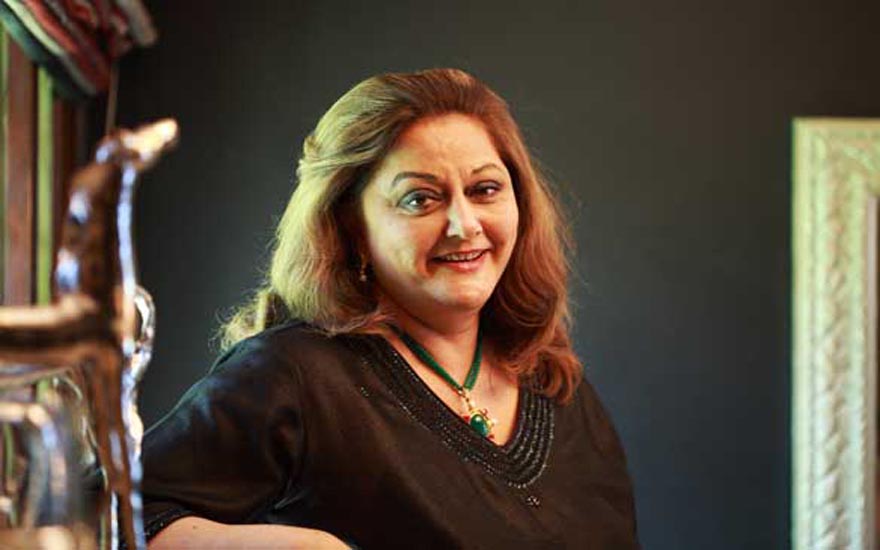
Zeenat Saeed Ahmed
“My shop Taneez was initially doing silver-plated decorative household items. But when we started silver jewellery with semi-precious gems of very good quality, there were many interested buyers. I used semi-precious stones because precious ones are quite expensive, which makes the jewellery a lot more costly.
I started out by holding exhibitions in Karachi and Lahore, which is how we introduced our pieces to the customers. The response was excellent. The sales at that time were one-tenth of what they are now. But now, we have four shops, two in Lahore, two in Karachi, and one opening in Islamabad. I think we sell the most jewellery in the country because we have the largest stores. I don’t know of anyone who really sells on that scale. But most of the others don’t use real stones and I’m afraid some of them do try to trick the customers. People generally come to us because we’re reliable and we guarantee the silver as well as the stones.
Sets are expensive, so we sell fewer of those. We sell more of the individual items, like earrings, bracelets, rings and cufflinks. This also helps people who don’t want to spend too much money. The prices of the jewellery at the store start at Rs.600 and goes up to Rs.25,000. We change designs every month — we have at least 10 new ones each month.
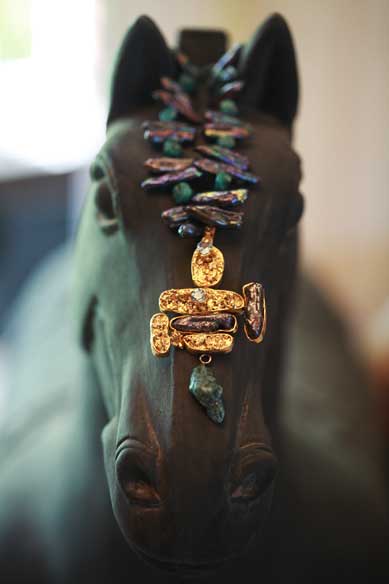 I haven’t studied gemology. But I’m very proud to say that I can recognise a stone better than some of the gemologists. In fact, my jewellers are often surprised that I know all the names. I read a lot of books on gems. And going to all these shows, you talk to other jewellers and you learn. I pick up things with time. Wherever I can find a jewellery book, I buy it to learn about the qualities of the stones. While I do admit that I copy designs as well, I design some of the pieces myself. I copy oldkundan designs, if I see very good ones, because I’m not very good with those. I’m better with designing contemporary jewellery.
I haven’t studied gemology. But I’m very proud to say that I can recognise a stone better than some of the gemologists. In fact, my jewellers are often surprised that I know all the names. I read a lot of books on gems. And going to all these shows, you talk to other jewellers and you learn. I pick up things with time. Wherever I can find a jewellery book, I buy it to learn about the qualities of the stones. While I do admit that I copy designs as well, I design some of the pieces myself. I copy oldkundan designs, if I see very good ones, because I’m not very good with those. I’m better with designing contemporary jewellery.
The karigars are finally beginning to understand the intricacies of design and I keep telling them, ‘Don’t just come to work with your hands, come with your brains as well.’ I keep grumbling about the finish because quality is a great problem in Pakistan. So I have to constantly show them samples and compare those to the mess they’ve made. Now they bring designs to me and ask me to try this or that, or they show me what they can do.
Defining the design philosophy for Taneez and compartmentalising it is very difficult. Lahore, for example, was very much into contemporary design, but now they’ve all gone back to polkis and kundans, particularly during the wedding season. And Karachi, which was also quite partial towards more contemporary jewellery, is also asking for ethnic jewellery in silver, so we’re trying to do a mix of the ethnic and the modern. But I would like to do totally modern and contemporary jewellery because the ethnic kind is available all over. At the moment, however, the market demands it, so we do it. So, there is no philosophy at the moment.”
Zeenat Saeed Ahmed
Jewel of The Capital
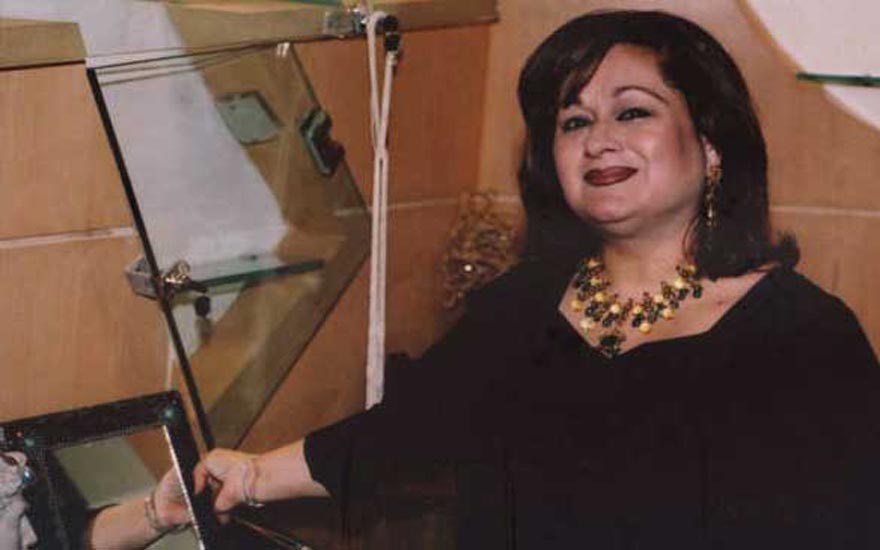
Shafaq Habib
“When I was living in New York, I found American jewellery to be too simple for my taste, and I found Pakistani jewellery to have too much gold and lack a certain degree of aesthetic sense. It was then that I decided to design my own jewellery. I have also pursued and completed several courses in jewellery designing and making in New York, and held my first exhibition in Washington DC in 1982.
I work with all types of precious as well as semi-precious stones, and only work with 22-carat gold. Pearls of all types are also an absolute favourite of mine. The stones I use come from different parts of the world and from the Northern Areas of Pakistan.
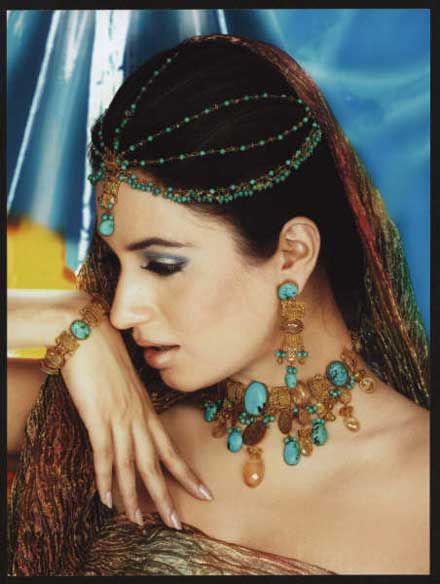 The problem with a majority of the jewellery makers today is that they focus more on copying designs than actually creating new ones. The truth is that jewellery designing is an art form, and like any art form, one requires a certain amount of creativity, inspiration and aesthetic depth to excel in it. My inspiration comes from two sources: my drive to make the best designs and life itself, because inspiration is limitless.
The problem with a majority of the jewellery makers today is that they focus more on copying designs than actually creating new ones. The truth is that jewellery designing is an art form, and like any art form, one requires a certain amount of creativity, inspiration and aesthetic depth to excel in it. My inspiration comes from two sources: my drive to make the best designs and life itself, because inspiration is limitless.
Initially, explaining the designs to my workers and having them craft the jewellery according to my standards was extremely difficult. With time, they have developed a work ethic and now they enjoy their work. Most of my workers have been working with me for the past 13 years, so now they have the training my work requires.
The wedding season is easily the busiest time of the year for me, and this is when I often find myself locked up in my office in Islamabad, my personal abode, for long hours of the night. I hold six exhibitions in Pakistan every year and I also have a few abroad. I also export to the US, the UK and the Middle East. In addition, I have had exhibitions in London, as well as the Middle East.
I try to make my designs as unique as possible. After 26 years of working in this field, I’ve come to realise that the fresher the designs are, the more popular they become. My own preference is somewhere between western and Pakistani. My style itself is a blend of ancient Mughal, Greek and various European artistic approaches.”
Shafaq Habib
Royal Revival
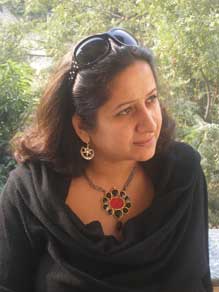 “I have a degree in interior design from the Parsons School of Design in New York where I learnt the core principles of design. I was very fortunate to be there since it’s very different and provides a highly specialised education.
“I have a degree in interior design from the Parsons School of Design in New York where I learnt the core principles of design. I was very fortunate to be there since it’s very different and provides a highly specialised education.
I returned to Lahore about five years ago. I started doing interior design projects but I soon realised I wasn’t inspired at all. I needed something else. So, for now, it’s jewellery that inspires me immensely and is a major passion of mine.
‘Revival’ is a clichéd term, but that is what I’m trying to do: revive the jewellery from regions of the subcontinent that have never been worked on before, such as Kerala and Mysore. I have to say that I give a lot of credit to the exposure my art school education gave me. You get to understand theories in great depth, which made me realise that if something is not affordable, it will not truly be revived. If I were to use gold, it will only be affordable to a few privileged people. That is why so far I have only used silver in my designs.
I have skilled craftsmen who were found after a lot of searching and taught for about four years in order for them to understand the level of finishing and the mindset I demand. The mindset is not “New. Shiny. Glitzy.” The mindset goes back to what the old masters created. Aspiring for that craftsmanship means following microscopic instructions. For instance, from the Nizam of Hyderabad’s collection, I have replicated Gauhar Begum’s taaweez. The amulet’s proportions have this divine planning and it’s not a simple square pendant — these are geometric proportions that you can’t mess with.
One of the most significant places that has inspired me is New York, which is the centre of my learning and knowledge because of all the shows I attended at the Metropolitan Museum of Art and the Guggenheim. But places like the Rawar Fort in Cholistan, the palaces in Bahawalpur and Rakni in Balochistan have fed magic into my mind. At the same time, my revival jewellery is not strictly limited to Pakistan. A pair of earrings that I have produced in an Indo-French design is the Nizam of Hyderabad’s design commissioned by him to Cartier, who gave it a European sensibility. The end product was Cartier’s take on the subcontinent’s jewellery. So revival crosses borders and boundaries and isn’t limited to just one region.
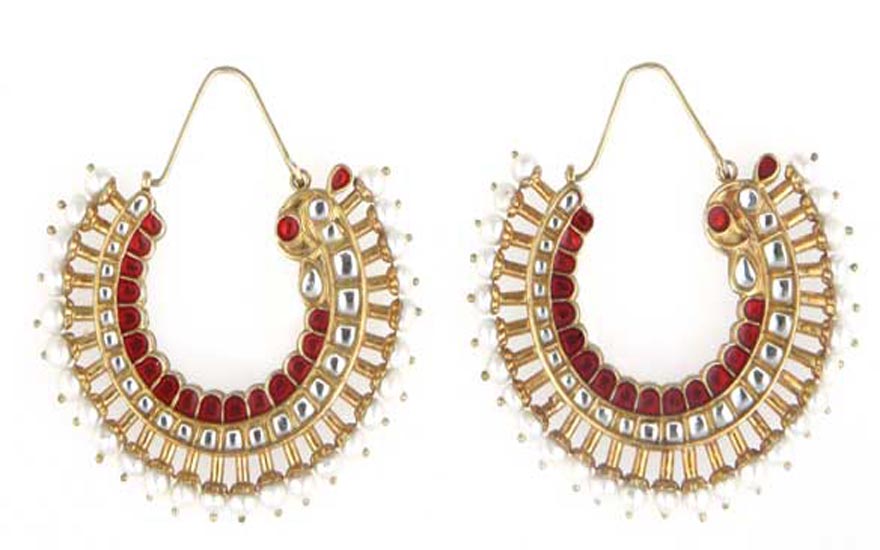
It is essential for designers to travel and search the world. Your life’s whole exposure is not the latest Cosmopolitan or Google. It is really the requirement that you go, you travel, you see regions, you see colours and you see textures. In order to be a designer, you must follow your heart. I opened an interior design studio in Delhi, called Studio 9. Four months later, the Parliament House bombing took place and I had to pack up and leave. People thought I was mad to even start something like that, but luck was with me.
However, this is just a by-product of my life. I am not a jeweller, I am a designer. This is an 18-month project as of now. I plan to continue it and I have other things in my life. I love photography. I love to print my own pictures in the dark room. I do my interior architecture. I make specific design courses and workshops that I teach at art schools.”
Amber Sami


